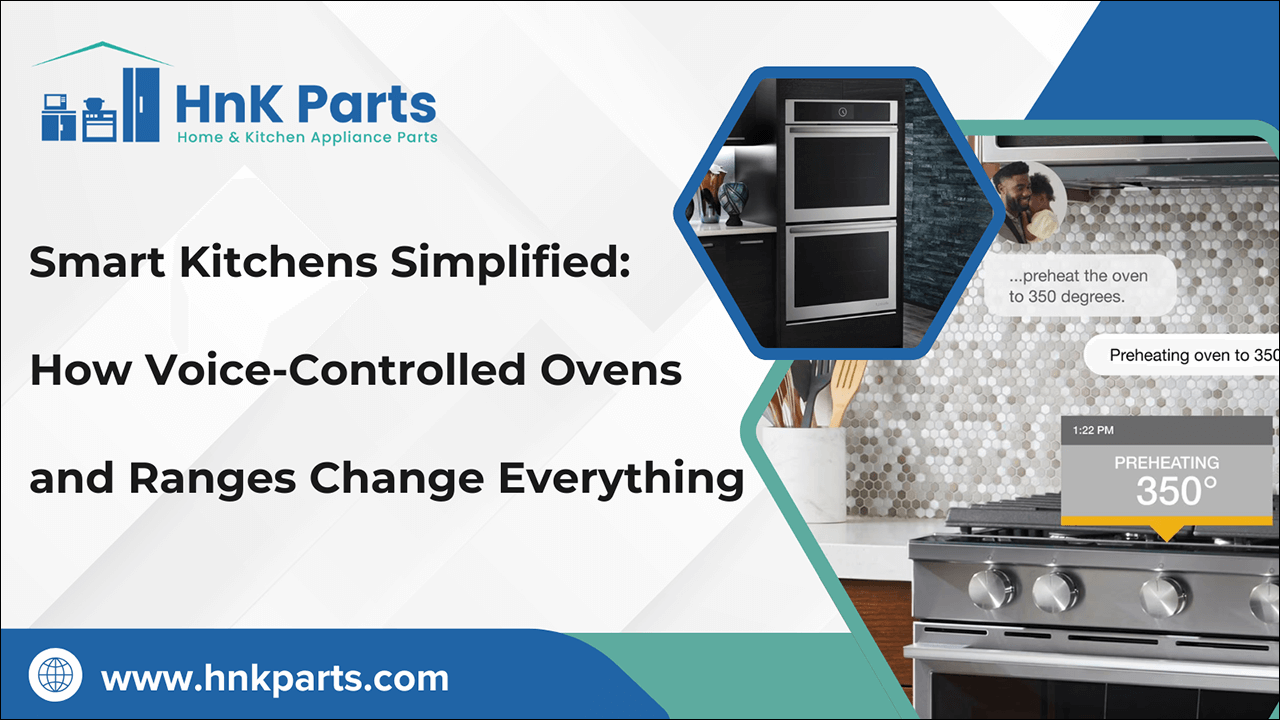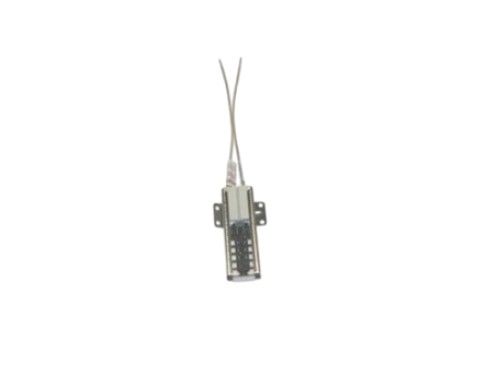
Smart Kitchens Simplified: How Voice-Controlled Ovens and Ranges Change Everything
Modern homes are undergoing a technological renaissance, and the kitchen is at the forefront of this transformation. No longer just a place to prepare meals, today’s kitchen is evolving into an intelligent, responsive environment capable of anticipating our needs. Central to this evolution is the rise of voice-controlled ovens and ranges, which allow home cooks to manage cooking operations hands-free, with surgical precision, and with seamless integration into a broader smart-home ecosystem.
For busy families, home chefs, seniors, or differently-abled individuals, voice-enabled cooking promises an unprecedented level of convenience, safety, and accessibility. As we explore how these smart ovens and ranges work, the benefits they deliver, leading brands, everyday use cases, and potential pitfalls, you’ll see why voice control is not just a gimmick but a fundamental shift toward fully automated, intuitive cooking experiences.
What Are Voice-Controlled Ovens and Ranges?
Voice-controlled ovens and ranges blend traditional cooking appliances with advanced speech-recognition software and internet connectivity.
-
Microphone arrays tuned to detect wake words like “Hey Google” or “Alexa.”
-
Embedded processors running speech-to-text engines and command-parsing algorithms.
-
Smart assistant integration, enabling users to connect through Amazon Alexa, Google Assistant, or proprietary AI assistants.
-
Wireless connectivity (Wi-Fi or Bluetooth) for synchronization with smartphones and home networks.
Key features often include natural language command recognition (e.g., “Preheat the oven to 375°F”), status notifications sent to your phone, remote start/stop capabilities, and links to recipe databases. Some advanced models analyze cooking progress through internal cameras and sensors, providing real-time feedback.
Key Benefits of Voice-Controlled Ovens and Ranges
Integrating voice control into kitchen appliances unlocks multiple advantages:
-
Hands-free convenience: Eliminates the need to touch knobs or touchscreens with messy hands. You can continue chopping, stirring, or kneading while issuing commands.
-
Enhanced precision: Achieve exact temperature adjustments mid-cook without removing protective gloves. Voice commands reduce human error in setting timers and preheat cycles.
-
Improved accessibility: Seniors and differently-abled individuals gain greater autonomy in cooking tasks. Voice activation reduces physical barriers associated with bending, reaching, or fine manual control.
-
Efficient multitasking: Busy cooks can juggle multiple pots, pans, and side dishes, issuing oven commands on the fly. Voice control frees up hands and eyes to focus on complex recipes or watch over children.
-
Consistent results: Once saved, custom cooking sequences can be recalled by name, ensuring repeatable results for favorite dishes.
Voice-activated cooking transforms the oven and range from passive heat sources into proactive kitchen helpers, making everyday meal prep smoother and more enjoyable.
How Voice-Controlled Ovens Work
Voice-controlled ovens rely on a blend of hardware and software to interpret and execute spoken instructions.
-
Processes speech through onboard or cloud-based speech-to-text services.
-
Parses intent via natural language understanding (NLU) to determine the requested action (e.g., “Set timer for 20 minutes”).
-
Translates commands into hardware instructions: adjusting heating elements, controlling fans, or sending notifications.
-
Maintains state by tracking temperature, cooking mode, and elapsed time, updating both the display panel and connected devices in real time.
How Voice-Controlled Ranges Work
Ranges combine an oven with cooktop burners, introducing additional challenges for voice control, recognizing stove-top zones, ignition sequences, and safety interlocks.
Voice-enabled ranges integrate the same microphone and processing pipeline as ovens, but extend control to:
-
Burner ignition: Activating individual gas or electric burners by name or zone (e.g., “Turn on front-left burner to medium heat”).
-
Temperature modulation: Adjusting the element or gas flame intensity in discrete increments.
-
Safety checks: Requiring confirmation for high-heat commands or verifying pot presence via built-in weight sensors.
-
Ventilation: Controlling integrated range hoods and exhaust fans through spoken instructions.
Many models also include cooktop-to-oven synchronization, enabling commands like “Start simmering sauce on back-right burner while preheating oven to 400°F.”
Brands & Models of Voice-Controlled Ovens and Ranges
The voice-controlled appliance market is driven by leading global manufacturers offering advanced smart ovens and ranges. Below is a quick comparison of top brands, their standout models, and key features.
|
Brand |
Model |
Key Features |
|
GE Appliances |
|
|
|
Samsung |
|
|
|
|
|
|
Whirlpool |
|
|
Use Cases in Everyday Cooking with Voice-Controlled Ovens and Ranges
Voice-controlled ovens and ranges shine in practical scenarios:
-
One-step preheating: “Hey Alexa, preheat the oven to 350°F” eliminates manual knob-turning and waits for ready alerts via smartphone.
-
Dynamic timer adjustments: Adjust cooking intervals during the recipe. “Increase the timer by five minutes” or “Pause the timer” without interrupting your workflow on the stovetop.
-
Hands-free temperature tweaks: While glazing a roast, “Set the oven to 425°F” lets you maintain focus on basting.
-
Remote monitoring & control: Leave the kitchen to fetch groceries; open your smart-home app to check the current oven temperature or cancel a bake cycle from anywhere.
-
Multi-task coordination: During elaborate meals, coordinate multiple dishes. “Turn on the back-left burner to medium while preheating the oven to 375°F.”
-
Guided recipes & safety reminders: Integrated recipe platforms can prompt, “Stir the sauce now,” or warn, “Remember to wear oven mitts.”
Such use cases not only save time but also reduce stress, enabling cooks to focus on creativity and flavor rather than the mechanics of appliance operation.
Drawbacks & Considerations of Voice-Controlled Ovens and Ranges
While compelling, voice-controlled cooking appliances present challenges:
Internet dependency: Without Wi-Fi, voice functions may degrade or become unavailable. Offline fallback modes vary by manufacturer, often reverting to basic manual control.
-
Privacy & security: Always-listening microphones pose theoretical eavesdropping risks. Manufacturers implement hardware-level mute buttons, encrypted data transmission, and strict privacy policies; however, concerns persist for security-savvy users.
-
Cost premium: Voice-enabled ovens and ranges command a 20–40% price premium over traditional units. Upfront investment may be justified by long-term convenience and energy-saving features, but budget buyers may hesitate.
-
Learning curve & reliability: Speech recognition errors can frustrate users, especially in noisy environments. Brand ecosystems also vary—some assistants respond better to kitchen-centric commands than others.
-
Maintenance & upgrades: Firmware updates are required to maintain compatibility and patch vulnerabilities. Not all models support over-the-air updates indefinitely; older units may become obsolete faster.
Prospective buyers should weigh these factors against daily use scenarios and personal comfort with connected devices.
How to Easily Replace a Samsung Oven Igniter: A Complete Step-by-Step Guide
The Future of Voice-Controlled Ovens and Ranges in Smart Kitchens
Looking ahead, several trends will shape the evolution of voice-controlled kitchen technologies:
-
AI-driven recipe suggestions: Assistants will analyze your pantry inventory (via barcode scanning or smart storage sensors) and propose meal ideas based on dietary preferences, expiration dates, and cooking history.
-
Predictive cooking: Ovens will autonomously adjust heat curves in response to built-in thermal imaging, humidity sensors, and weight-based doneness metrics, calling out, “Chicken is perfectly golden; starting keep-warm mode.”
-
Full kitchen ecosystems: Beyond ovens and ranges, refrigerators, dishwashers, and small appliances (e.g., mixers, coffee makers) will respond to unified voice commands: “Start my morning routine” could initiate a coffee brew, preheat the oven for breakfast pastries, and display news on the fridge screen.
-
Open voice platforms: Third-party developers will create custom “skills” or “actions” to extend functionality, everything from multilingual cooking tutorials to voice-driven meal planners.
-
Sustainability integration: Voice assistants may suggest energy-efficient settings or reheating routines that minimize power draw, aligning cooking habits with eco-friendly practices.
These innovations will drive further adoption, making every kitchen a dynamic, intelligent hub of culinary creation.
Voice-controlled ovens and ranges represent a pivotal step toward truly smart kitchens, blending convenience, precision, and accessibility in one seamless experience. By outsourcing routine tasks, preheating, timing, and temperature adjustment to voice assistants, home cooks reclaim time and focus on what matters: crafting delicious, memorable meals. Embracing these voice-enabled appliances today positions your kitchen at the cutting edge, ready for a future where cooking is as effortless as speaking your next command. HnKParts is the one-stop shop for stove & oven replacement parts, including burners, thermostats, grates, knobs, igniters, and switches from top-selling manufacturers at competitive prices.
FAQs
Do voice-controlled ovens still have manual controls in case of internet outages?
Yes. Most models include traditional buttons and dials as a backup, ensuring full functionality even without Wi-Fi or smart assistants.
Can voice-activated ovens integrate with meal planning or recipe apps?
Some advanced models sync with recipe apps, guiding users step-by-step and automatically setting the right temperature and cooking time for chosen meals.











